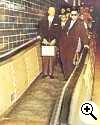
On 30 Jan 1958, the first two-way, moving sidewalk in an American airport was opened in the new terminal building at the city's new municipal airport, Love Field, in Dallas, Texas. Passenger conveyors traveling at the granny-friendly speed of one-and-a-half miles per hour assisted foot traffic for the long walk in each of three concourses from the terminal lobby to the plane ramps. The Today in Science History article on Moving Sidewalks describes it, but the startling fact that a toddler was crushed to death within two years of its operation grabs your attention. Reading how it happened, if you imagine the scene at incident you'll be horrifed. This fatal accident forced a design change to make the next generation of the equipment safer.
The idea of a horizontal people mover has an interesting history. It goes back to the previous century when the first moving sidewalk was featured at the Columbian Exposition, the World's Fair in Chicago in 1893. That was followed by an ambitious installation of a moving sidewalk was at the Paris Exposition of 1900, which set a record that still stands for length and speed of operation. It was 2.1 miles long and connected the principal points of the exhibition.

On 30 Jan 1929, Roger N. Shepard was born, American psychologist whose work provided major new insights into the nature of mental processes. Today's book pick is: , by . As the author, Shepard introduces us to his drawings of visual tricks, discusses the origins of his scientific and artistic work, and shares his reflections on the nature of art, perception, and the mind.Until Shepard began publishing his imagery work in the 1970s, no one had objectively measured mental imagery. It was thought to be impossible. The scientific community has since taken notice.
Today, his work influences fields as diverse as psychology, philosophy, computer science, linguistics, and neuroscience. Shepard says his image orientation work has been used in a pilot aptitude test. The test accurately identifies trainees who are most likely to make pilot errors. His imaging methods were also used in the design of a computer-based diagnostic system for breast and prostate cancers. Joseph L. Young, the NSF program director who has overseen Shepard's NSF grants for more than 19 years, anticipates other practical benefits such as better organization of control rooms and cockpit displays, as well as more effective educational programs.
It is available from Amazon, typically about (As of earlier time of writing - subject to change.)
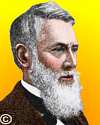 | We have really, that I know of, no philosophical basis for high and low. Moreover, the vegetable kingdom does not culminate, as the animal kingdom does. It is not a kingdom, but a common-wealth; a democracy, and therefore puzzling and unaccountable from the former point of view. |
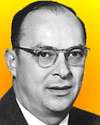 | Science is a field which grows continuously with ever expanding frontiers. Further, it is truly international in scope. … Science is a collaborative effort. The combined results of several people working together is often much more effective than could be that of an individual scientist working alone. |
 | Until we consider animal life to be worthy of the consideration and reverence we bestow upon old books and pictures and historic monuments, there will always be the animal refugee living a precarious life on the edge of extermination, dependent for existence on the charity of a few human beings. |
| Before you look at today's web page, see if you can answer some of these questions about the events that happened on this day. Some of the names are very familiar. Others will likely stump you. Tickle your curiosity with these questions, then check your answers on today's web page. | |
| Births | |
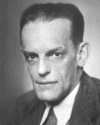 | On 30 Jan 1889, Max Theiler was born, an American microbiologist who won the 1951 Nobel Prize for Physiology or Medicine for his research on a certain tropical disease. Theiler’s discovery that mice are susceptible to this disease facilitated research and eventual development of a vaccine against the disease in humans. What is the disease that Theiler researched? |
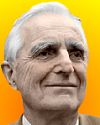 | On 30 Jan 1925, Doug Engelbart was born, an American electrical engineer and inventor who developed the computer graphical user interface. He collaborated in the invention of joystick, track ball and light pen devices, but is best known for a device he made from a block of wood and two wheels. What is Engelbart's most famous creation? |
| Deaths | |
 | John Bardeen (1908-1991) was an American physicist who was cowinner of the Nobel Prize for Physics in both 1956 and again in 1972. The 1956 prize was shared for a co-invention he made with William B. Shockley and Walter H. Brattain. What was the invention made by the three winners of the 1956 Nobel Prize in Physics? |
 | Orville Wright (1871-1948) made the first ever manned powered flight in an aircraft that he and his brother Wilbur had designed and built together. Where did this first ever manned powered flight take place, and for about how many seconds? |
| Events | |
 | On 30 Jan of 1998, a new glue, Dermabond, able to replace painful stitches, won the unanimous vote of a medical advisory panel for the Food and Drug Administration. Dermabond can seal off certain wounds quickly, without the need for painful shots, can hold a wound closed, sterile and flexible while it is healing. It is the chemical cousin of a certain glue used in households (which is too toxic for medical use). What is the name of the related household glue? |
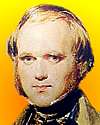 | On 30 Jan 1868, a book by Charles Darwin was published, a follow-up work, written in response to criticisms that his theory of evolution was unsubstantiated. Darwin here supports his views via analysis of various aspects of plant and animal life, including an inventory of varieties and their physical and behavioral characteristics, and an investigation of the impact of a species’ surrounding environment and the effect of both natural and forced changes in this environment. What was the name of the book? |
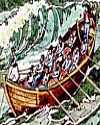 | On 30 Jan 1790, the first of a new design of boat, the Original, was first tested at sea by its English builder, Henry Greathead of South Shields. The Original was 30ft long, twelve oars, self-righting, and had seven hundredweight of cork for buoyancy. What was the special use for this type of boat? |
Fast answers for the previous newsletter for January 29: electromagnetic force • comparison of mineral hardness • directly from nitrogen and hydrogen gases • manganese (from ferro-manganese, or spiegeleisen ore) • decade including the year 1896 • DDT • ice cream cone.
 If you enjoy this newsletter, the website, or wish to offer encouragement or ideas, please send feedback by using your mail reader Reply button.
If you enjoy this newsletter, the website, or wish to offer encouragement or ideas, please send feedback by using your mail reader Reply button. Your click on a Facebook, StumbleUpon, or other social button on the site webpages is also a welcome sign of appreciation. Thank you for using them.
© This newsletter is copyright 2020 by todayinsci.com. Please respect the Webmaster's wishes and do not put copies online of the Newsletter — or any Today in Science History webpage. (If you already have done so, please remove them. Thank you.) Offline use in education is encouraged such as a printout on a bulletin board, or projected for classroom viewing. Online, descriptive links to our pages are welcomed, as these will provide a reader with the most recent revisions, additions and/or corrections of a webpage. For any other copyright questions, please contact the Webmaster by using your mail reader Reply button.
--
If you do not want to receive any more newsletters, Unsubscribe
To update your preferences and to unsubscribe visit this link
Executive Real Estate Business Class
-
"It was like a man with wings. It wasn't like anything you'd see on TV or in a monster movie." ...
About the publisher
Search This Blog
Blog Archive
-
▼
2021
(585)
-
▼
January
(109)
- Ian Kershaw on why Hitler declared war on America
- On This Day for January 31 - Guy Fawkes executed i...
- Newsletter for Sunday 31 January.
- January 31: Slavery Abolished in the USA, Guy Fawk...
- On This Day for January 30 - “Great Soul” assassin...
- Newsletter for Saturday 30 January.
- January 30: Oliver Cromwell Ritually Executed, Mah...
- On This Day for January 29 - Iraq, Iran, and North...
- Newsletter for Friday 29 January.
- January 29: Romeo and Juliet, Coca-Cola and the Se...
- 'The Food That Built America' Is Back!
- On This Day for January 28 - Explosion of the spac...
- Newsletter for Thursday 28 January.
- Inside The Still-Mysterious Circumstances Of Heath...
- Demystified: What’s the Difference Between a Presi...
- On This Day for January 27 - Vietnam War ended, Wo...
- Newsletter for Wednesday 27 January.
- January 27: Kaiser Bill is Born, the Siege of Leni...
- You are now unsubscribed
- What The Wild West Actually Looked Like in 48 Reve...
- New Savings! $50 off Family Memberships
- On This Day for January 26 - First European settle...
- Newsletter for Tuesday 26 January.
- January 26: Catholic Counter-Reformation, British ...
- On This Day for January 25 - Claudius affirmed as ...
- Newsletter for Monday 25 January.
- January 25: São Paulo Founded, Charles Wilkes Disc...
- Queen Victoria and Prince Albert's marriage | Wors...
- On This Day for January 24 - Opportunity's Mars la...
- Newsletter for Sunday 24 January.
- January 24: Scouting for Boys, Apple's Macintosh a...
- On This Day for January 23 - Madeleine Albright sw...
- See All That's Interesting Most Popular Articles
- Please Confirm Subscription To Our Newsletter
- The "Alaskan Avenger" Who Attacked Sex Offenders W...
- On This Day for January 22 - Roe v. Wade ruling, L...
- Newsletter for Friday 22 January.
- On This Day for January 21 - First commercial Conc...
- Newsletter for Thursday 21 January.
- Need Context with Your News?
- Demystified: Where Do Honeybees Go in the Winter?
- On This Day for January 20 - Barack Obama sworn in...
- Newsletter for Wednesday 20 January.
- On This Day for January 19 - Rule in India transfe...
- Newsletter for Tuesday 19 January.
- On This Day for January 18 - German Empire establi...
- Newsletter for Monday 18 January.
- January 18: King of Siam Kills the Crown Prince of...
- Queen Victoria and Prince Albert: was their union ...
- On This Day for January 17 - Hawaiian monarchy ove...
- Newsletter for Sunday 17 January.
- January 17: US-Modoc War, the UN Security Council ...
- On This Day for January 16 - Beginning of Persian ...
- Newsletter for Saturday 16 January.
- January 16: Ivan the Terrible, Louis XVI's Death S...
- The Tragedy Of David Reimer, The Boy Forced To Liv...
- On This Day for January 15 - British Museum opened...
- Newsletter for Friday 15 January.
- January 15: Henry VIII and the Church of England, ...
- On This Day for January 14 - Premiere of Giacomo P...
- Newsletter for Thursday 14 January.
- January 14: The Dutch Conquer Malacca, the US Revo...
- Demystified: Why Does Water Freeze from the Top Down?
- On This Day for January 13 - Émile Zola's “J'accus...
- Newsletter for Wednesday 13 January.
- January 13: 1st Issue of "The Times" of London, Ch...
- On This Day for January 12 - Haiti severely damage...
- Newsletter for Tuesday 12 January.
- January 12: A Day of Coronation, Gandhi's Last Fas...
- On This Day for January 11 - Amelia Earhart's Hawa...
- Newsletter for Monday 11 January.
- January 11: Spices, Morse Code, Insulin and 55 Yea...
- The real history behind Bridgerton
- On This Day for January 10 - Common Sense publishe...
- Newsletter for Sunday 10 January.
- January 10: Thomas Paine Publishes Common Sense, T...
- On This Day for January 9 - Election of Mahmoud Ab...
- THE IGBO LANDING - HOW THEY COMMITTED SUICIDE
- Newsletter for Saturday 9 January.
- January 9: Joan of Arc's Trial, the Daguerreotype ...
- The Biggest Historical Discoveries From 2020 And M...
- On This Day for January 8 - Anniversary of Grimald...
- Newsletter for Friday 8 January.
- January 8: US National Debt Briefly Hits $0, Forma...
- On This Day for January 7 - Galileo's discovery of...
- Newsletter for Thursday 7 January.
- January 7: A Day of Invention - The Typewriter, Hy...
- On This Day for January 6 - Epiphany, Richard II i...
- Newsletter for Wednesday 6 January.
- January 6: Charles I put on Trial for Treason, FDR...
- Meet The Real-Life Goodfellas Whose True Stories W...
- On This Day for January 5 - Golden Gate Bridge con...
- Newsletter for Tuesday 5 January.
- January 5: Richmond Burns, The Nazi Party Forms, A...
- Last Call for 30% off Memberships
- On This Day for January 4 - Burma granted independ...
- Newsletter for Monday 4 January.
- January 4: The Colt Revolver, a 33 Year Strike and...
- Dangers of Victorian London| Roman history quiz | ...
- On This Day for January 3 - Martin Luther excommun...
-
▼
January
(109)
-
Blogroll
-
About
HistoryFact










0 comments:
Post a Comment